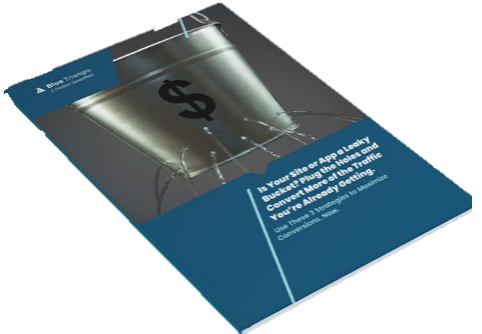Launching a product is hard. But watching a great product fail? That's even harder. Many companies assume that if they build something amazing, success will follow. But history is littered with incredible products that flopped—not because they weren't good, but because of poor marketing decisions.
In a recent episode of The Frictionless Experience, hosts Chuck Moxley and Nick Paladino shared fascinating insights on product marketing failures, offering real-world examples of what goes wrong when companies overlook key marketing fundamentals, and confuse product marketing with product management.
Let's bust five of the biggest product marketing myths that could sink your next product launch.
Myth #1: Great Products Sell Themselves
Reality check: Even the best products won't succeed if customers don't know about them.
One of the biggest launch mistakes companies make is assuming that if they build something remarkable, people will naturally find and adopt it. But as Chuck explains, marketing isn't just about awareness—it's about making sure people understand the value of a product.
Take the example of Google Glass—an innovative product that had massive potential but ultimately failed. Nick pointed out:
"They had a lot of product failures that existed in the field. The product didn't work, or it distracted people while driving. There were a lot of turn-by-turn navigation features that you would have just in your eye. It was also very uncomfortable. And a lot of people would look at it strangely—there were just a lot of things that were amiss."

Another classic example is Crystal Pepsi.
It was marketed as a healthier alternative to regular Pepsi—same taste, no artificial coloring. Sounds great, right? But consumers weren't ready for a clear cola.

Nick recalled:
"Everyone was uncomfortable drinking clear soda that tasted like Pepsi. It freaked them out."
Great products don't sell themselves. Great marketing does.
Myth #2: Product Marketing Is Part of the Product Team
Many companies assume that product marketing naturally falls under the product team's responsibilities. But product managers and product marketers play very different roles.
Product managers focus on building the product—identifying customer needs, defining features, and ensuring functionality. Product marketers, on the other hand, focus on selling the product—crafting messaging, educating customers, and driving adoption.
Chuck explained how these two roles should work "hand in glove" but remain distinct:
If your company treats product marketing as just another product function, you're likely missing out on a crucial aspect of driving adoption.
Myth #3: Customer Personas Are Optional
Some companies assume they don't need detailed customer personas—that their product will appeal to "everyone." But failing to define and understand your target audience is a recipe for disaster.
Chuck emphasizes how crucial it is to understand customers on an emotional level:
"People buy emotionally and justify with logic. You have to get to know what the problem your product solves, what will motivate them to buy it, and who the ideal customer for that product is."
Without clearly defined personas, you risk creating products for an audience that doesn't exist. A great example? Google+.
Nick summed up the failure of Google+:
"It was like the combination of LinkedIn and Facebook and wasn't as good as either of them. It was something in the middle that just didn't solve a problem."
Instead of carving out a unique space, Google+ failed because it misunderstood its target audience. If you don't take the time to research and build your customer personas, you're setting your product up for failure.
Myth #4: New Features Will Be Discovered Naturally
Many companies assume that if they add great features, users will find and use them on their own. This couldn't be further from the truth.
Chuck highlights the importance of actively promoting new features:
"There are so many features rolling out so often, and how do you communicate those, and how do you get the word out? "
If customers don't know about a feature, they won't use it. And if they don't use it, they won't see the full value of your product.
Nick gave an example of how this plays out in real life:
"If you create a new loyalty program for your brand, yet you don't let your users know about it, of course, it's going to fail."
Great features don't just need to be built—they need to be marketed.
Myth #5: If a Product Fails, It's the Product's Fault
Many companies blame the product when sales don't take off. But more often than not, the problem isn't the product—it's the marketing.
Chuck shared his experience working with SaaS companies where CEOs were frustrated because sales teams "didn't know how to sell the product." The real issue? There had never been any product marketing.
A perfect example of a marketing fail was KFC running out of chicken in the UK. It wasn't a product problem—it was a logistics problem. Yet, the brand took full responsibility with a brilliant marketing recovery.
Chuck explained how KFC responded:
"They actually ran full-page ads, and they took the KFC on the buckets, and they rearranged the letters to be FCK, and then the copy said, 'Hey, we screwed up. We ran out of chicken, and we're really sorry.'"
This campaign turned a disaster into a win. It proved that even when things go wrong, great marketing can still save the day.
Product Marketing Matters More Than You Think
The biggest mistake companies make is assuming that a great product is enough. The truth is, even the best product will fail if it's not marketed properly.
So, avoid these five product marketing pitfalls:
✅ Great products don't sell themselves. They need strategic messaging and promotion.
✅ Product marketing isn't a product team function. It requires a dedicated marketing effort.
✅ Customer personas aren't optional. They're essential for targeting the right audience.
✅ New features won't be discovered on their own. They need active marketing and education.
✅ If a product fails, it's not always the product's fault. It's often a marketing issue.
If you want your next product launch to succeed, don't just build it. Market it.
.png)
During the holiday rush, every shopper matters
Optimize the customer journey before the eCommerce event of the year.

.jpg)



